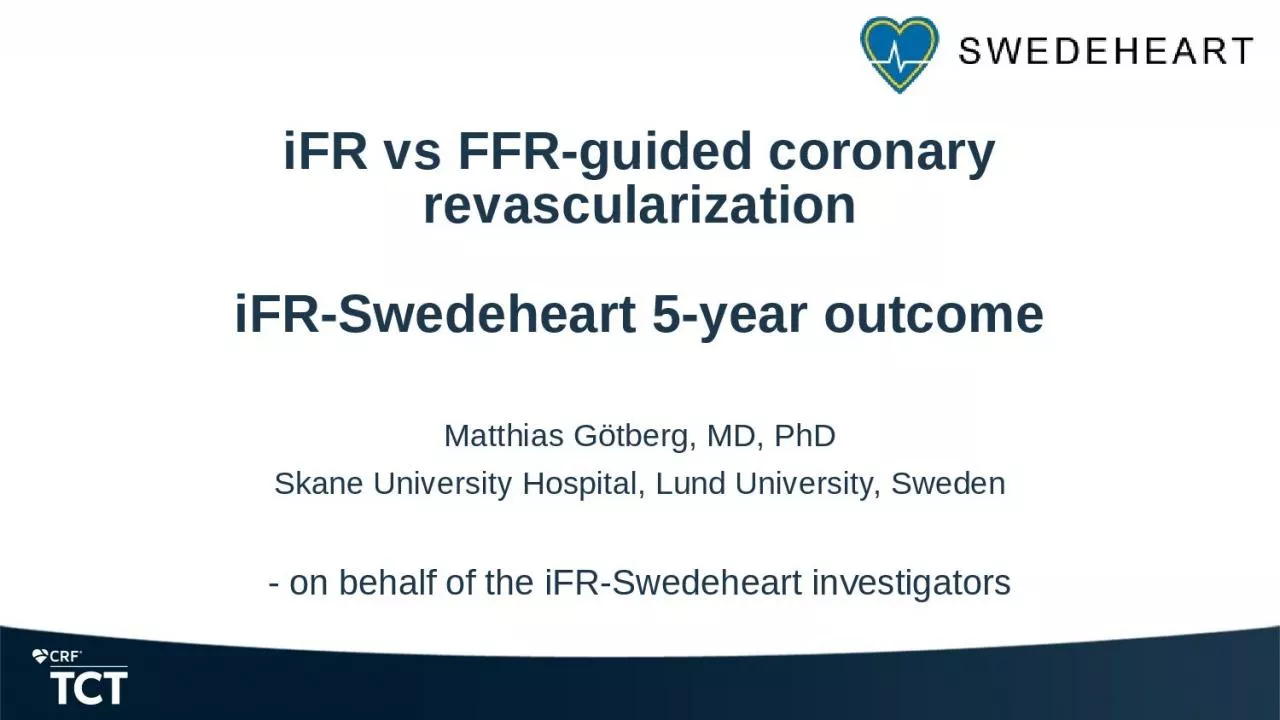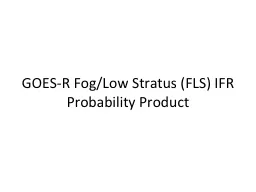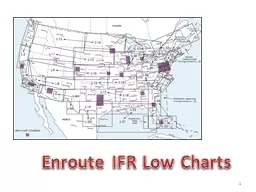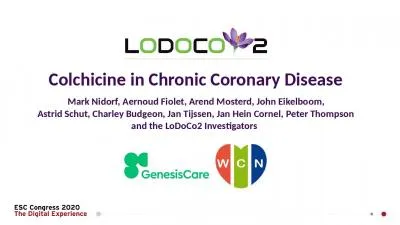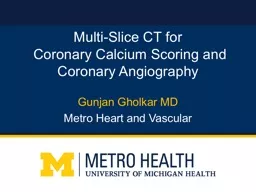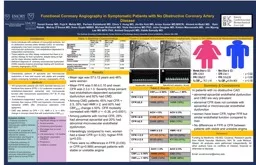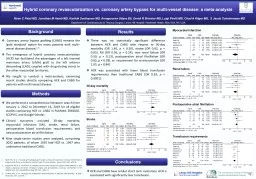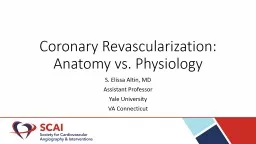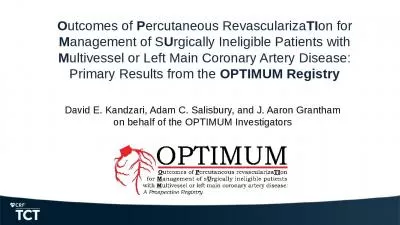PPT-iFR vs FFR-guided coronary revascularization
Author : HappyHusky | Published Date : 2022-07-28
iFRSwedeheart 5year outcome Matthias Götberg MD PhD Skane University Hospital Lund University Sweden on behalf of the iFRSwedeheart investigators Within the past
Presentation Embed Code
Download Presentation
Download Presentation The PPT/PDF document "iFR vs FFR-guided coronary revasculariz..." is the property of its rightful owner. Permission is granted to download and print the materials on this website for personal, non-commercial use only, and to display it on your personal computer provided you do not modify the materials and that you retain all copyright notices contained in the materials. By downloading content from our website, you accept the terms of this agreement.
iFR vs FFR-guided coronary revascularization: Transcript
Download Rules Of Document
"iFR vs FFR-guided coronary revascularization"The content belongs to its owner. You may download and print it for personal use, without modification, and keep all copyright notices. By downloading, you agree to these terms.
Related Documents

